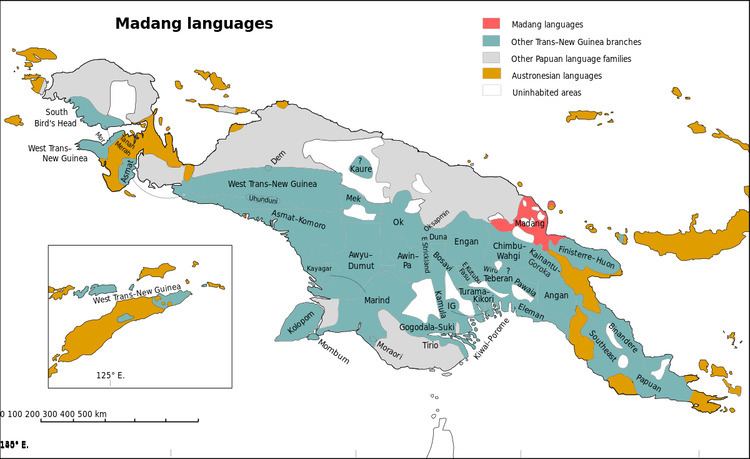Geographic
distribution: New Guinea | Glottolog: mada1298 | |
 | ||
Linguistic classification: Trans–New Guinea
Madang Subdivisions: Southern Adelbert Range
Rai Coast
Croisilles
Kalam
? Kowan | ||
The Madang or Madang–Adelbert Range languages are the largest family of Trans–New Guinea languages (TNG). It was classified as Trans–New Guinea by Stephen Wurm, followed by Malcolm Ross. William A. Foley concurs that it is "highly likely" that the Madang languages are part of TNG, although the pronouns, the usual basis for classification in TNG, have been replaced in Madang.
Contents
The family is named after Madang Province and the Adelbert Range.
History
Sidney Herbert Ray identified the Rai Coast family in 1919. In 1951 these were linked with the Mabuso languages by Arthur Capell to create his Madang family. John Z'graggen (1971, 1975) expanded Madang to languages of the Adelbert Range and renamed the family Madang–Adelbert Range, and Wurm (1975)[1] adopted this as a branch of his Trans–New Guinea phylum. For the most part, Ross's (2005) Madang family includes the same languages as Z'graggen Madang–Adelbert Range, but the internal classification is different in several respects, such as the dissolution of the Brahman branch.
Internal classification
There are four well-defined branches of Madang,
plus the Kowan languages, whose classification is uncertain.
The time depth of Madang is comparable to that of Austronesian or Indo-European. Ross (2000) places the Kowan languages closest to Southern Adelbert, and links Rai Coast and Kalam. Pronouns are as follows:
These replaced the TNG pronouns. However, the dual suffixes *-le and *-t remain, and the original pronouns appear to live on as Kalam verbal suffixes.
